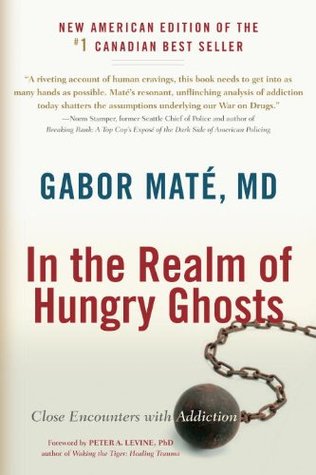More on this book
Community
Kindle Notes & Highlights
by
Gabor Maté
Read between
August 1 - August 7, 2024
The object, form, and severity of addictions are shaped by many influences—social, political, and economic status; personal and family history; physiological and genetic predispositions—but at the core of all addictions there lies a spiritual void.
Addictions, even as they resemble normal human yearnings, are more about desire than attainment. In the addicted mode, the emotional charge is in the pursuit and the acquisition of the desired object, not in the possession and enjoyment of it. The greatest pleasure is in the momentary satisfaction of yearning.
The fundamental addiction is to the fleeting experience of not being addicted. The addict craves the absence of the craving state. For a brief moment he’s liberated from emptiness, from boredom, from lack of meaning, from yearning, from being driven or from pain. He is free. His enslavement to the external—the substance, the object, or the activity—consists of the impossibility, in his mind, of finding within himself the freedom from longing or irritability. “I want nothing and fear nothing,” said Zorba the Greek. “I’m free.”
Are you closer to the people you love after your passion has been fulfilled or more isolated? Have you come more truly into who you really are, or are you left feeling hollow?
This man with severe ADHD and learning disabilities, post-traumatic stress disorder, and deeply entrenched drug addiction; with no employment skills; with no history of successful human relationships—this is one of the culprits the police devote their time, skills, and energy to investigating and arresting; about whose misdeeds prosecutors versed in the law gather evidence; whom socially conscious and poorly recompensed legal aid defenders assist; and whom learned judges admonish and repeatedly incarcerate. Such is the War on Drugs.
If one set out deliberately to fashion a legal system designed to maximize and sustain the wealth of international drug criminals and their abettors, one could never dream up anything to improve upon the present one—except, perhaps, to add tobacco to the list of contraband substances.
According to a front-page report in the Globe and Mail, the study found that “law enforcement consumed by far the largest chunk (73 percent) of the [national] drug strategy’s annual $245 million budget, with no demonstrated impact on curbing the use of illegal drugs. At the same time, 14 percent is spent on treatment, 7 percent on research, and 3 percent each for addiction prevention and harm reduction.”


